"Trikala is the city that no one could have imagined existed." These are not my words, but those of the British Guardian, who came, saw, was impressed and wrote. So who am I to disagree? Trikala is a smart city, which respects its inhabitants, as it is full of sidewalks, bike paths and squares. It combines tradition with modernism and offers natural landscapes of unique beauty!
A few words about the city
Trikala is a city in Western Thessaly and is the capital of the homonymous Regional Unit and the seat of the homonymous Municipality. It is a charming city built on the site of ancient Trikki (according to mythology, the nymph Trikki was the daughter of Pinios) and hometown of the famous ancient physician, Asclepius. The town largely owes its beauty to the picturesque river Litheos, a tributary of Pinios, but also to its historical monuments, its excellent landscaping, its spacious squares, its parks and its pedestrian streets. Today it counts 61,653 inhabitants in the city and 81,355 in the wider area, being the eighth largest city in Greece! Let’s meet it.
10) Asklepieion of Ancient Trikki
In ancient times, the city of Trikki was known for its Asklepiion and as the homeland of the famous doctor Asclepius, according to the geographer of the 1st BC century, Strabo. Archaeological excavations carried out since the beginning of the 20th century have brought to light three Roman-era structures and one Byzantine-era building. Among other things, a bathhouse, a small Byzantine temple and mosaic floors have been uncovered. Plus, a massive building has been found, which is believed to have been the gymnasium of ancient Trikki! From the last phase of the building come the so-called "mosaic of Lycurgus", which depicts the mythical King Lycurgus who, possessed by fury and holding a double axe, is preparing to attack the God's nurse Dionysus, Nymph Ambrosia, as well as another mosaic also represented by the Dionysian cycle.
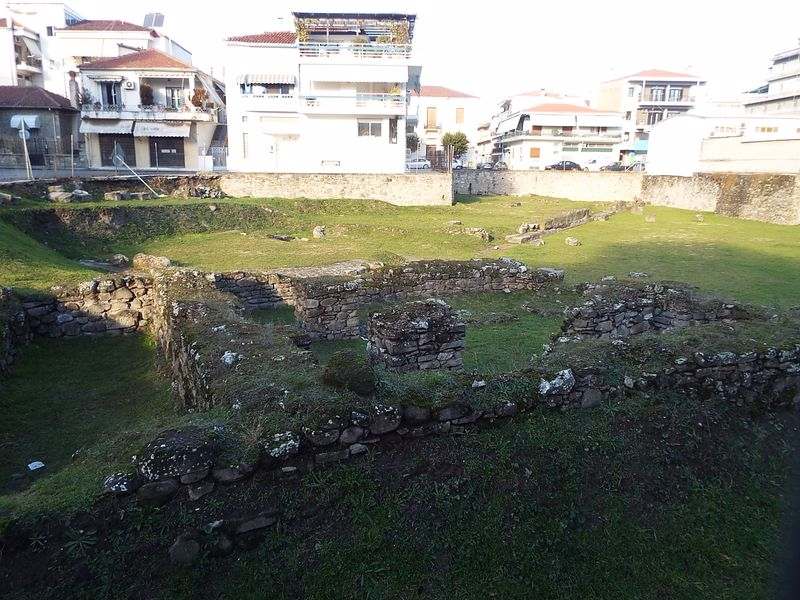
9) Trikala Railway Station
The railway station of Trikala is one of the most historic spots of the city. It first operated in 1886 during the government of Charilaos Trikoupis and was designed by a French company, which was responsible for the railway network of the area. It is an architectural masterpiece, which was renovated in the early 90s and has been in full operation ever since. The hallmark of the railway station is, of course, the "Karvouniaris". A steam train over 100 years old, which operated the Route Palaiofarsala–Kalambaka. Today it stands silent, with its smokestack extinguished, upon a piece of the rails of history, recalling another more romantic age.
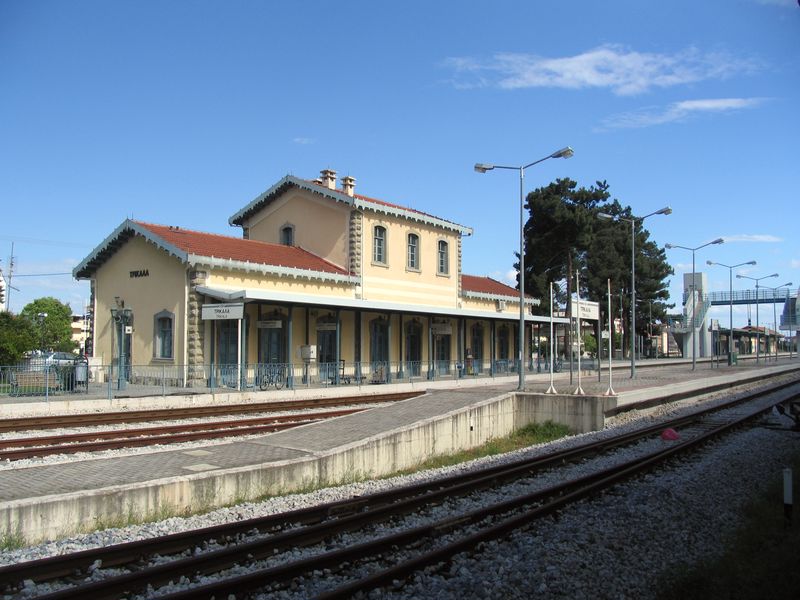
8) The Museums
In Trikala there are many interesting museums and art spaces that will attract your attention. In my opinion, it is worth starting from the Municipal Folklore Museum, which exhibits objects, tools, costumes and printed material (photos and documents), in an effort to introduce the visitor to the culture of the local people from the 18th century until the middle of the 20th century.
Moreover, do not miss a visit to the History and Culture Center of Kliafa Society. It is the old premises of the Kliafa aerated drinks company that were located in the center of the city, an industrial building of 1926. The company converted the old refrigerator and factory facilities into a center of history and culture and opened its gates in 2003.
Finally, other interesting museums of the city are the Municipal Art Gallery, the Dorothea School, the Folk Music Center, the Tsitsani Museum and the Katsikogianni Museum!
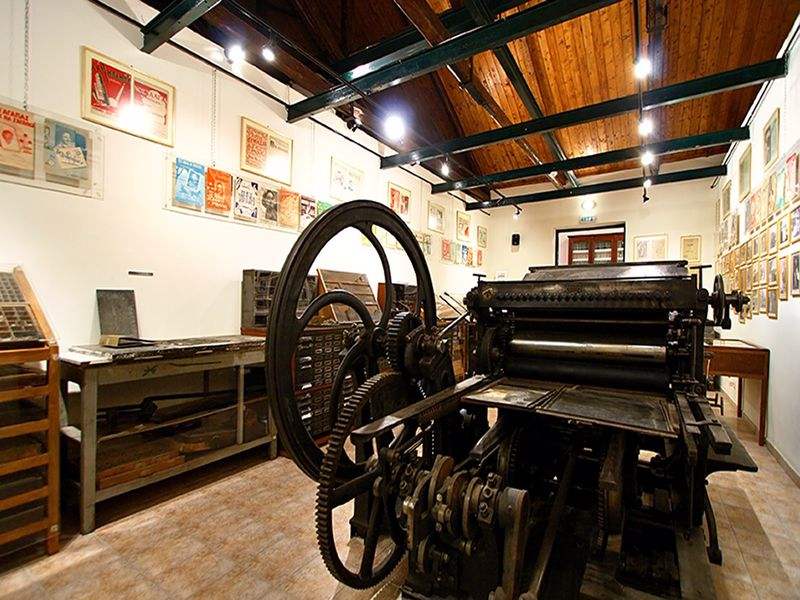
7) Matsopoulos Mill
The Matsopoulos Mill is considered one of the most vibrant sites of Trikala and one of the most important monuments of the industrial heritage of our country. It includes a building inclusiveness of 3500 sq.m. and a total of 90 kilometers with the surrounding area. It was constructed in 1884 by the Agathoklis brothers, shortly after the liberation of Thessaly and was bequeathed to the municipality of Trikaion in 1977 by I. Matsopoulos, benefactor of the city. It is particularly well known as it hosts the Christmas project, the Mill of the Elves! Also, in this place takes place the Comedy Festival, a unique festival for the Greek standards, that takes place in the Matsopoulos Mill since 2004! Ultimately, there is a municipal refreshment room, a summer and winter cinema, a theater and spaces for children's play.
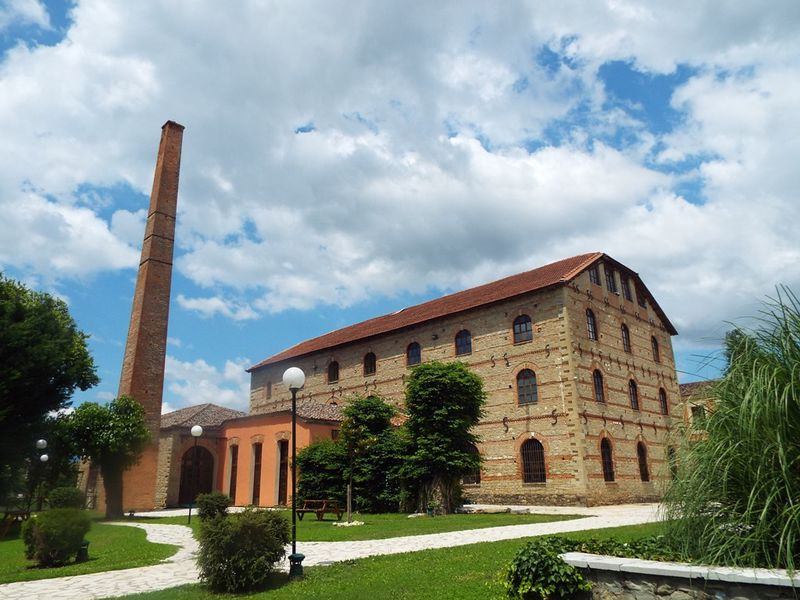
6) Kursum Mosque
The Mosque of Osman Shah or Kursum Mosque (lead mosque), is built on the edge of the city and is a unique attraction of its kind. Apart from the fact that it is huge, 22 meters high and 18 wide, it is the only surviving of the many that once existed in Trikala and is protected by UNESCO as a World Heritage Site. We do not know exactly when it was erected, but it is known that it was erected in the 16th century by Osman Shah, who found himself in exile in the city, while its architect is the famous architect of that time, Mimar Sinan. This day, it serves as a venue for events of mild character, such as art exhibitions and speeches, while at the back of it is preserved the mausoleum of Osman Shah, an octagonal building with a dome, inside which are kept archaeological finds of the area.
5) Pertouli-Elati
Pertouli and Elati are two of the most popular winter destinations in Greece and are located just a breath away from the city of Trikala. The first village is about fifty kilometers from Trikala and is located at an altitude of more than 1000 meters! It is one of the loveliest settlements of Pindos, full of fir trees and built amphitheatrically on the slope of the mountain. In Pertouli you will find traditional stone houses, picturesque taverns and beautiful guesthouses. There is also the ski center of Pertouli, which is easily accessible and receives thousands of visitors every year.
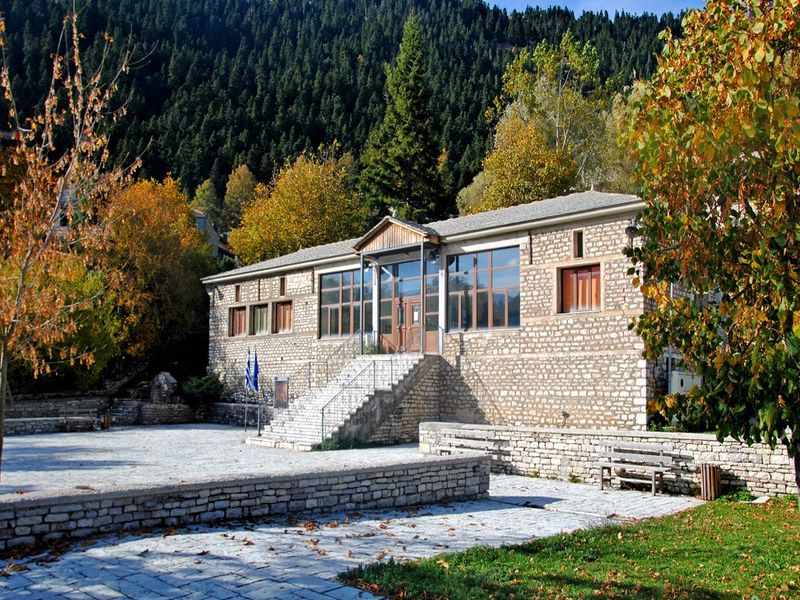
Elati (Tyrna for locals) is the largest of the mountainous villages of the area and counts 406 permanent residents! And it is built amphitheatrically, just 30 kilometers from Trikala! Very close to the village is the gate of Trikala. The famous and picturesque large arched bridge where it is a place of photography for all travelers passing through the area! Apart from this, however, there is the area of Palaiokarya with the popular waterfalls. After a 500m route on a dirt road, you will meet a waterfall and the river that passes by you. A place of rare beauty, where you will have the opportunity to spend quality time next to nature.
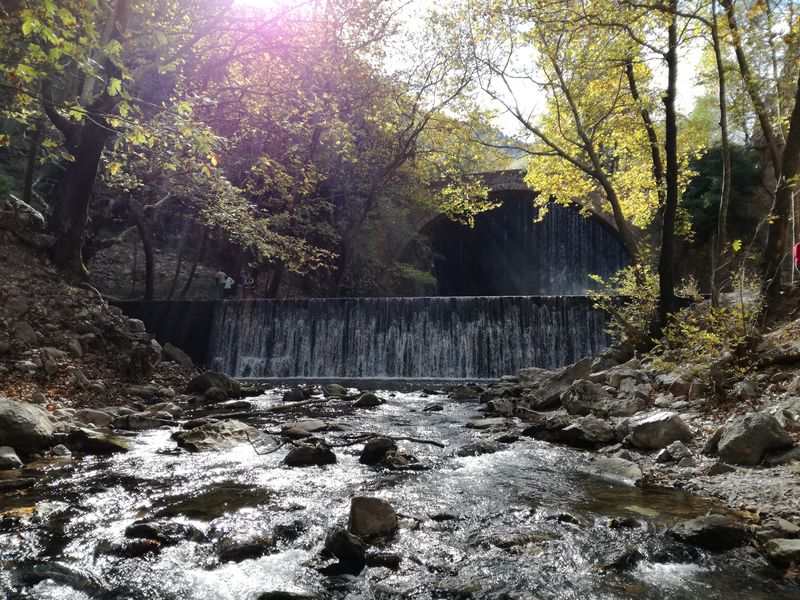
4) Castle Of Trikala
The Byzantine castle of Trikala is located on the northeastern edge of the city and was built by Emperor Justinian in the 6th century on the ruins of the Acropolis of ancient Trikki. Many parts of the castle were destroyed during the fall of the town by the Ottomans, but were reconstructed by them when they realized the importance of the site! After the revolutions of 1854 and 1878 the fortress was repaired again and was an important axis of development and security for the city. A hallmark of the fort is the clock tower, built in the mid-17th century within the castle. This clock, along with the corresponding Tower in Larissa, are two of the oldest towers in Turkish-occupied Greece. Unfortunately, the one that stands today has replaced the older one, which was destroyed by the Nazi bombings. Finally, apart from the supernatural view of the whole city and the best sunset of Trikala, you will be able to enjoy a theatrical performance, since the fortress operates an open-air theater.

3) Varousi and Manavika
The Old Town is considered the most beautiful and picturesque part of Trikala and consists of two districts Varousi and Manavika. The first, during the Turkish occupation, was the neighborhood of the rich and includes until today a large number of listed buildings and mansions of that era. There you will also find many Byzantine and post-Byzantine churches, very close to each other. Typical is that of Agios Stefanos, which dates back to 1896 and has been built on the site of an older, Byzantine church which was completely destroyed. Finally, the narrow streets of this neighborhood became known from Tsitsani’s song about the notorious "Sakaflias".
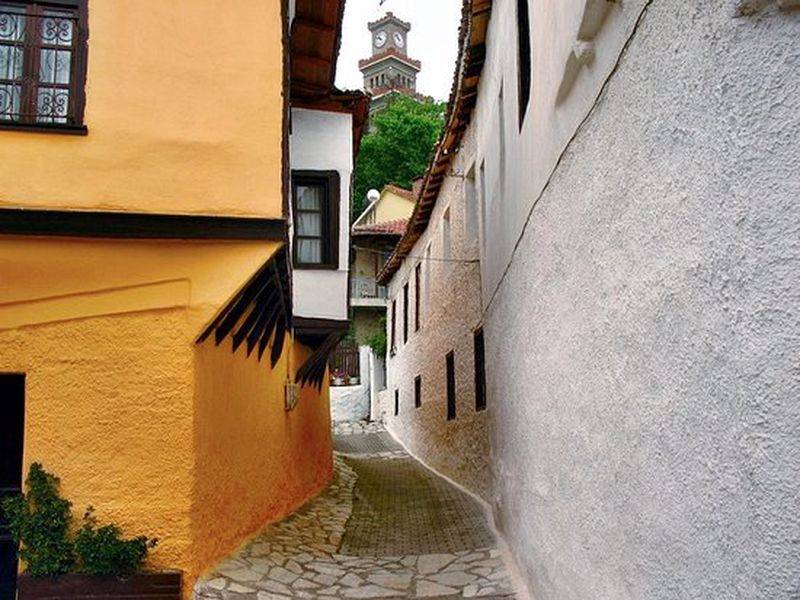
Continuation of the district of Varousi, are the famous Manavika (grocery stores), with the characteristic traditional architecture. The district formerly housed the brothels of the city and later the vegetable market, hence its name, while today you will find mainly traditional taverns, restaurants and cafes. A characteristic image of this particular district is a mural, created in 2006 by foreign artists and which depicts in a highly realistic way the everyday life of an old folk neighborhood.
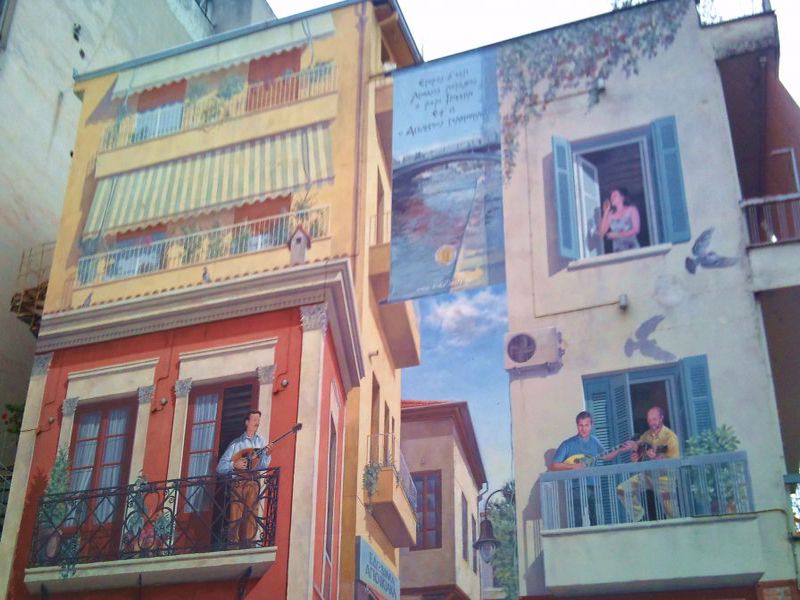
2) Litheos River
The Litheos River is one of the four rivers of Trikala (Litheos, Agiamoniotis, Pinios, Kourmekis) and is a tributary of Pinios. Without any doubt it is considered the jewel of Trikala and it is the only river of such extent that passes through a Greek city. Although the river divides the city in two, its banks are connected by thirteen arches, half of which are used exclusively for pedestrians! The most popular of these is the central bridge, which connects the central square with the pedestrian street of Asklipio. The visitor can admire from there the view of the green banks of the Litheos and the statue of Asklepios on the opposite bridge, who according to Strabo was born there.
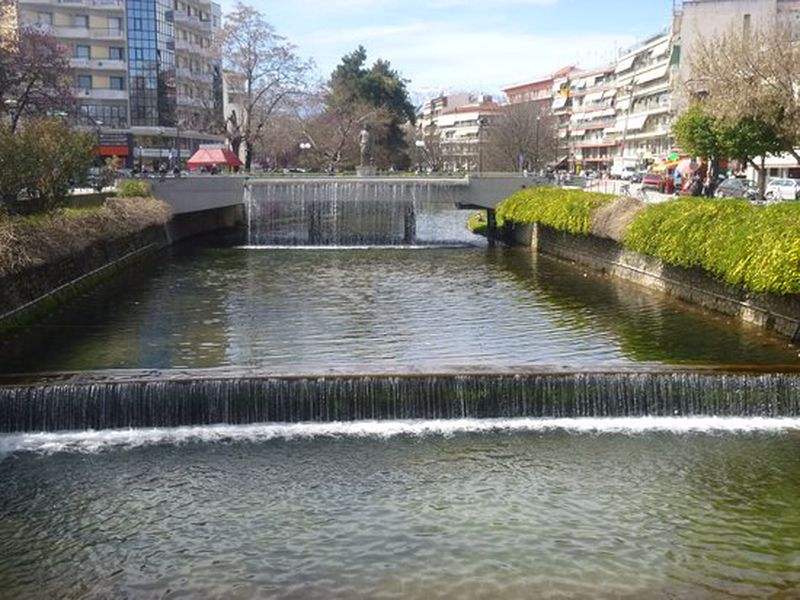
1) Kalampaka-Meteora
Of course, Meteora and the city of Kalambaka could not be missing from the top of a list for Trikala. Kalambaka is the capital of the Municipality of Meteora and is located in the northwestern part of the Thessalian plain. Just above it rise the rocks of Meteora, one of the most impressive geological phenomena in the world! These are giant imposing sandstone rocks that reach 400 meters high! How they were created remains a mystery to this day, but the prevailing version wants the specific boulders to be created from a delta-shaped cone of river rocks and limestone stones that for millions of years poured into a sea area that covered Thessaly at the time! On the top of some rocks are built impressive monasteries, considered the second most important monastic complex in Greece, after Mount Athos! Of the thirty that existed historically, today only six are in operation, which, since 1988, have been included in the list of UNESCO World Heritage Sites. Although their access seems difficult, it is particularly easy since you can climb to the top and visit some monasteries with your car.
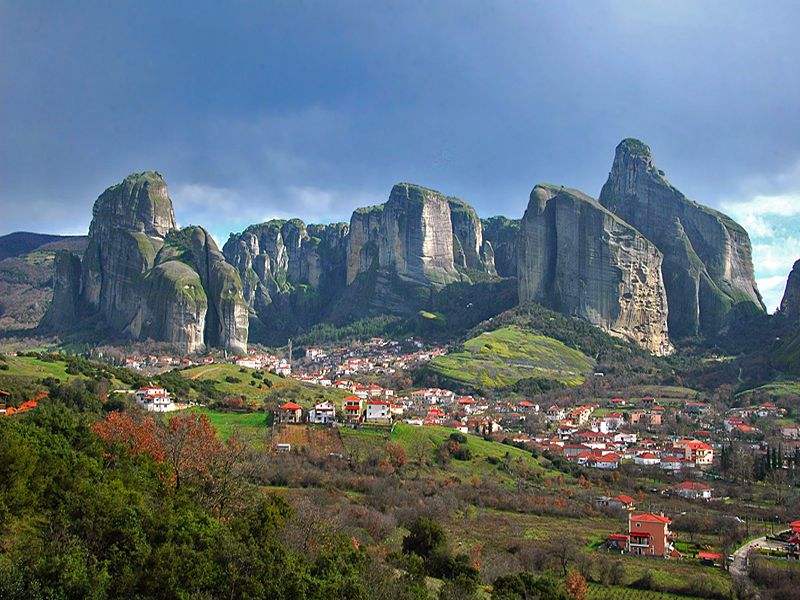
What to eat
In Trikala you will have the opportunity to taste fine products and delicious dishes. So in the city and generally in the wider area you will find meats of excellent quality, with the most famous dish the boiled goat and the Trikala sausage. Furthermore, do not miss the local pies like trachanopita and batzina (pumpkin pie), as well as the delicious dairy products (mainly galotyri), the handmade pasta and mountain herbs, gathered from the mountain. Finally, for dessert there is undoubtedly that you should try Farsala halva, with its creamy texture and rich taste.
If this article seemed interesting or contributed to your quality information, then you can like my facebook page: o_thessalonikios or follow me on instagram!
Mouzakidis Pantelis








